Reviews
Louis Malle
USA, 1985
Credits
Review by Matt Bailey
Posted on 01 December 2010
Source Criterion Collection Eclipse DVD
Categories Malle Entendu: The Ecstatic, Eclectic Cinema of Louis Malle
God’s Country, Louis Malle’s documentary about the people of Glencoe, Minnesota, was originally supposed to be a documentary about shopping malls. PBS had commissioned Malle to make a documentary about some aspect of the United States of his choosing, and in the late 1970s, shopping malls were erupting around the country like pimples across the face of an adolescent. Minnesota has long been pocked with famous malls, being home not only to the Mall of America (which opened in 1992, well after Malle’s film as made) but also to Southdale Center, the first fully enclosed shopping center in the country, opened in 1956. What began as a clever way to facilitate year-round shopping in a cold, snowy climate had become by 1979 the new town square of suburbs everywhere. Whatever impetus led Malle to want to make a film about the modern shopping mall, what better place to begin researching and shooting a film about them than in Minnesota, where the phenomenon began? Yet once he began to visit the malls, Malle apparently found himself so off-put by the ubiquitous and incessant piped-in music that he swiftly abandoned the project altogether. At a loss for a subject but committed to make a film, he and his crew rolled around Minnesota until they hit on the town of Glencoe.
There is nothing particularly interesting or unique about Glencoe that sets it apart from other small towns in the Midwest (or, I imagine, anywhere in the nation). It began as a settlement of German pioneers who farmed the rich soil and survived the harsh winters as best as they could. There are probably a thousand towns in Minnesota just like it, and probably a hundred thousand just like it across the country, which may be exactly what drew Malle to it. The film opens with a scene of an old woman in an anachronistic bonnet tending the spectacular flower garden in her front yard. This sight seems to have been the reason Malle stopped his car, started his camera, and perhaps inadvertently found his subject simply by imagining “What’s her story?”
Over the course of 89 minutes, Malle gets a little bit of her story, and a little more of the stories of several other people in Glencoe. The film, which approximates but does not quite approach ethnography, evinces Malle’s accidental approach to finding a subject as it does not bear an agenda beyond exploring what life is like in Glencoe. And yet a film about the people in a small town in Minnesota filmed primarily in 1979, just before the “Reagan Revolution,” and with a 1985 coda filmed at its height—a town exactly the kind in which, in 1984, it was “morning again in America”—can seem to have something of a retrospective agenda. Malle surely spoke with dozens of residents of Glencoe, so why does he choose to center the film around the parents of the Vietnam war protester (one of whom writes plays for the “progressive” theater group in town), the single woman unhappy with small town small-mindedness, the family farmers struggling season after season to keep their small farm going and praying that one of their children will grow up and take it over? Why does he seek to expose lingering resentments and highlight the anti-Semitism and racism of some of the town’s residents? Why does he choose to balance the thoughts of the old woman—without family but happy to consider her garden her companion—with the ramblings of the old man so abandoned by life that he only looks forward to dying?
Malle doesn’t seem to come to the point of his film until the final minutes, filmed on a return visit to Glencoe in 1985 as the country struggled to recover from its worst economic recession since the 1930s. Arnold Beneke, a lawyer (and the father of the protester mentioned above), gets the last word of the film as he bemoans the nation’s increasing “obsession with greed.” Beneke states that “a nation doesn’t live long with that obsession, and particularly a democracy. There’s a lot of good and a lot of good people in this country, and they aren’t going to subscribe to this philosophy of greed that’s going on now. It’s horrible.” Listening to Beneke in 2010 as the country struggles to recover from an even deeper economic crisis, a recession triggered or at least worsened by greed, is slightly chilling. I wonder what Malle would make of Glencoe now. Which stories of its citizens (which now include hundreds of Latino immigrants) would he highlight now?
Just as Malle could not resist going back to Glencoe to follow up with his subjects a few years after his initial visit, I could not resist dropping by Glencoe on a recent bleak November Sunday to retrace a few of his footsteps and to satisfy my curiosity about the place. I live in Minnesota, about 90 minutes from Glencoe, in what I think of as a small town but what in comparison with Glencoe could be considered a bustling metropolis. To get to Glencoe, I drove through or near several towns similar to it except that maybe they were founded by Czech homesteaders (New Prague), French fur traders (Belle Plaine), or an itinerant family singing group (Hutchinson). With the exceptions of a beautifully scenic river valley and the town centers themselves, the sights of the drive consisted entirely of farm after farm after farm. Glencoe has about the same population as it did when Malle first visited over thirty years ago, and it is still largely a farming community, but only in the way of most farm towns that have developed from communities where farmers buy, sell, and trade crops grown on family farms to feeding points for the insatiable maws of agribusiness giants. The largest employers in the Glencoe area include a plant that freezes and cans corn and peas for major food producers, an outpost of Archer Daniels Midland, and the manufacturing and distribution center of a division of a major holding company that makes cattle prods and feed buckets. If you live in North America, chances are good that, no matter where you live, you have eaten something (or have eaten something that ate or ate from something) that was processed in Glencoe.
What is interesting about Glencoe in real life (and three decades later) as compared to how it appears in the film is that it seems much larger in size and less isolated. The city is only an hour away from Minneapolis and sits astride a U.S. highway, convenient enough to be a bedroom community for commuters. After all, it could not have been that far off the beaten path for Malle to have stumbled upon it without looking for it. The town appears solidly working class, with no evidence of a “rich” part of town but with a large trailer park with a mix of brand-new and decades-old mobile homes. The Pizza Ranch franchise mentioned by the women’s softball team in the films is still there (I ate there on my visit), as is the Dairy Queen where Malle and his crew ate most of their meals. But now, just as in many small Minnesota towns, there is also a Mexican grocery and a Catholic church with services in Spanish.
Yet the most interesting thing in Glencoe today is the Pla-Mor Ballroom (connected to the Pla-Mor Lanes bowling alley) which hosts weekly polka dances, a once popular but now scarce expression of America’s diverse ethnic heritage. The Pla-Mor has stood for decades, but neither Malle nor his subjects make mention of it in the film, even though at one point he does linger his camera on a middle-aged couple performing a vigorous polka at a wedding reception (which may, in actuality, have been held at the Pla-Mor). Maybe I’m just too accustomed to the small towns of Minnesota to be impressed with a documentary about a few people living in one of them, but I sure would love to have seen a documentary on the kind of people who went (and continue to go) to the Pla-Mor Ballroom, packing its parking lot every Sunday afternoon.
A trap that many film critics and reviewers fall into is rebuking a film for not being the film they wanted to see, and I don’t want to do that here, but I think it is a major failing of Malle’s ethnographic approach not to have explored the role a place such as the Pla-Mor would have in a small community, particularly one of predominately German extraction. It may seem quaint or amusing to imagine Louis Malle making a documentary about a polka ballroom, but Minnesota is full of the descendants of immigrants trying (but mostly failing) to hold on to a few of the cultural traditions that their ancestors held dearly in the face of a melting pot America that demanded (and continues to demand) assimilation and subsumed all European ethnicities and cultures into, simply, “whiteness.” And just as the Minnesotan descendants of the German and Scandinavian pioneers who populated the state throughout the nineteenth and twentieth centuries struggled to maintain ties to their heritage, so did the descendants of the Native Americans displaced by these European settlers and so now do the Latino, Hmong, and Somali immigrants to Minnesota of recent decades.
I’m sure Malle’s film, playing on PBS in 1985, opened the eyes of a few urbanites who discovered that small-town Midwesterners have the same hopes and dreams, gripes, and doubts as everyone else, even as it reinforced ugly (yet, regrettably, often true) stereotypes of rural Americans. Beyond that, the impact of the film seems negligible. We don’t learn enough about Glencoe or its people for the film to have any lasting significance, and Malle failed to capture fully the way of life that was vanishing right in front of his camera.
More Malle Entendu: The Ecstatic, Eclectic Cinema of Louis Malle
-
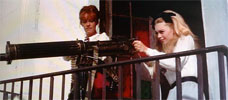
Viva Maria!
1965 -
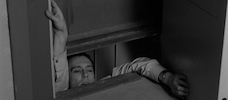
Elevator to the Gallows
1957 -
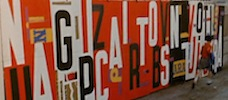
Zazie dans le métro
1960 -
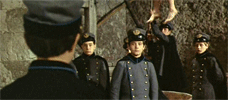
William Wilson
1968 -
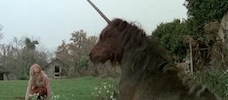
Black Moon
1975 -
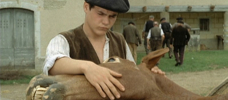
Lacombe, Lucien
1974 -

Atlantic City
1980 -
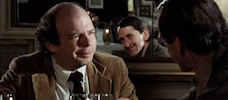
My Dinner with Andre
1981 -
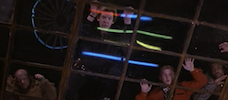
Crackers
1984 -
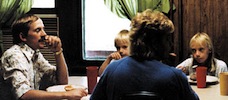
God’s Country
1985 -

Vanya on 42nd Street
1994
We don’t do comments anymore, but you may contact us here or find us on Twitter or Facebook.



